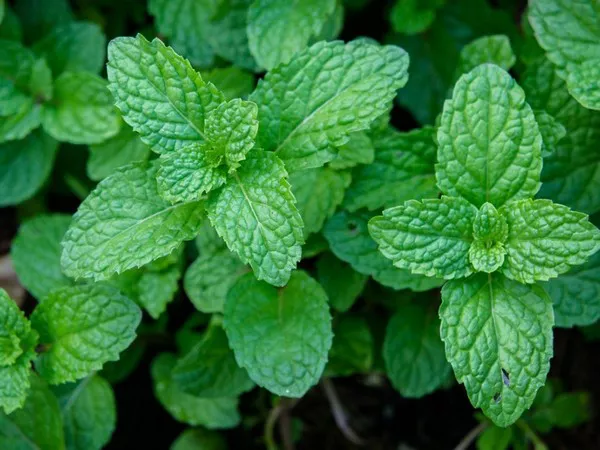In the vast tapestry of nature, an abundant array of plants possesses remarkable healing properties that have been harnessed for centuries by various cultures worldwide. From traditional remedies to modern pharmaceuticals, medicinal plants play a pivotal role in the well-being of humanity. In this exploration, we delve into the world of botanical medicine, unveiling the 15 most common medicinal plants that have stood the test of time and continue to offer valuable therapeutic benefits.
15 Most Common Medicinal Plants
1. Aloe Vera (Aloe barbadensis miller):
Aloe Vera, a succulent native to arid regions, is renowned for its soothing gel. The gel extracted from its fleshy leaves has been used for centuries to treat burns, wounds, and skin irritations. Rich in antioxidants and anti-inflammatory compounds, Aloe Vera is a staple in skincare products and traditional remedies for a variety of skin conditions.
2. Peppermint (Mentha × piperita):
Peppermint, a crossbreed of watermint and spearmint, is celebrated for its aromatic leaves containing menthol. This compound lends peppermint its distinct flavor and cooling sensation. Medicinally, peppermint is employed to relieve digestive issues, alleviate headaches, and soothe respiratory discomfort. Its essential oil is also used in aromatherapy for its invigorating properties.
3. Turmeric (Curcuma longa):
Hailing from the ginger family, turmeric is a golden-hued spice revered for its active compound, curcumin. With potent anti-inflammatory and antioxidant properties, turmeric has been a cornerstone in traditional medicine. Widely used in Ayurveda, turmeric is believed to aid in managing various conditions, including arthritis, digestive disorders, and skin issues.
4. Chamomile (Matricaria chamomilla):
Chamomile, with its daisy-like flowers, is a gentle herb known for its calming properties. The dried flowers are commonly used to prepare a soothing tea that aids in promoting relaxation, alleviating insomnia, and easing digestive discomfort. Chamomile’s anti-inflammatory effects also extend to topical applications for skin conditions.
5. Echinacea (Echinacea purpurea):
Echinacea, a vibrant purple coneflower, is celebrated for its immune-boosting properties. Rich in bioactive compounds, Echinacea is believed to stimulate the immune system, helping the body ward off infections and reduce the duration of colds. It is often consumed as a tea or taken in supplement form.
6. Garlic (Allium sativum):
Beyond its culinary uses, garlic has a long history as a medicinal plant. Known for its potent antibacterial and antiviral properties, garlic is valued for its potential to boost the immune system, lower blood pressure, and improve heart health. Allicin, a sulfur-containing compound in garlic, is credited for many of its health benefits.
7. Ginger (Zingiber officinale):
Ginger, a spicy and aromatic rhizome, is a versatile medicinal plant with a focus on digestive health. It is commonly used to alleviate nausea, reduce inflammation, and soothe gastrointestinal discomfort. Gingerol, the active compound in ginger, contributes to its anti-inflammatory and antioxidant effects.
8. Lavender (Lavandula angustifolia):
Lavender, with its fragrant flowers, is celebrated for its calming and relaxing properties. The essential oil derived from lavender is commonly used in aromatherapy to promote relaxation and alleviate stress. Lavender is also employed topically for its soothing effects on the skin and to aid in sleep.
9. Ginkgo Biloba (Ginkgo biloba):
Ginkgo Biloba, derived from the leaves of the ginkgo tree, is renowned for its potential cognitive benefits. Widely used in traditional Chinese medicine, ginkgo biloba is believed to enhance memory and cognitive function. It is often taken as a supplement to support overall brain health and improve circulation.
10. St. John’s Wort (Hypericum perforatum):
St. John’s Wort, adorned with bright yellow flowers, has been traditionally used to alleviate symptoms of mild to moderate depression and anxiety. Its active compounds, hyperforin, and hypericin are believed to influence neurotransmitters in the brain. St. John’s Wort is available in various forms, including teas, capsules, and extracts.
11. Rosemary (Rosmarinus officinalis):
Beyond its culinary uses, rosemary has gained recognition for its potential cognitive benefits. Rosemary contains compounds like rosmarinic acid and ursolic acid, which are believed to have neuroprotective effects. Inhaling the aroma of rosemary essential oil is thought to enhance memory and concentration.
12. Dandelion (Taraxacum officinale):
Considered by many as a pesky weed, dandelion boasts medicinal properties. Rich in vitamins and antioxidants, dandelion has diuretic properties that may aid in detoxification. It has been used traditionally to support liver health, promote digestion, and relieve water retention.
13. Sage (Salvia officinalis):
Sage, with its aromatic leaves, is more than just a culinary herb; it is a medicinal powerhouse. Sage contains antioxidants and anti-inflammatory compounds that may contribute to its various health benefits. It is traditionally used to soothe sore throats, support oral health, and alleviate menopausal symptoms.
14. Nettle (Urtica dioica):
Despite its stinging reputation, nettle is a nutrient-rich medicinal herb. Rich in vitamins, minerals, and antioxidants, nettle has been used to address conditions such as allergies, arthritis, and inflammation. Nettle tea and supplements are popular ways to incorporate its health benefits.
15. Valerian (Valeriana officinalis):
Valerian, a flowering herb, is renowned for its potential to improve sleep quality. Often used in herbal teas and supplements, valerian is believed to have calming effects on the nervous system. It interacts with neurotransmitters to promote relaxation and alleviate insomnia.
See also:10 MOST ENDANGERED TREES FACING EXTINCTION
As we journey through the realm of medicinal plants, it becomes evident that nature has provided an extensive pharmacopeia. These 15 most common medicinal plants showcase the diverse ways in which plants contribute to human health and well-being. From ancient remedies to modern supplements, the healing properties of these botanical wonders continue to be explored and harnessed for a healthier future.
You Might Be Interested In:























